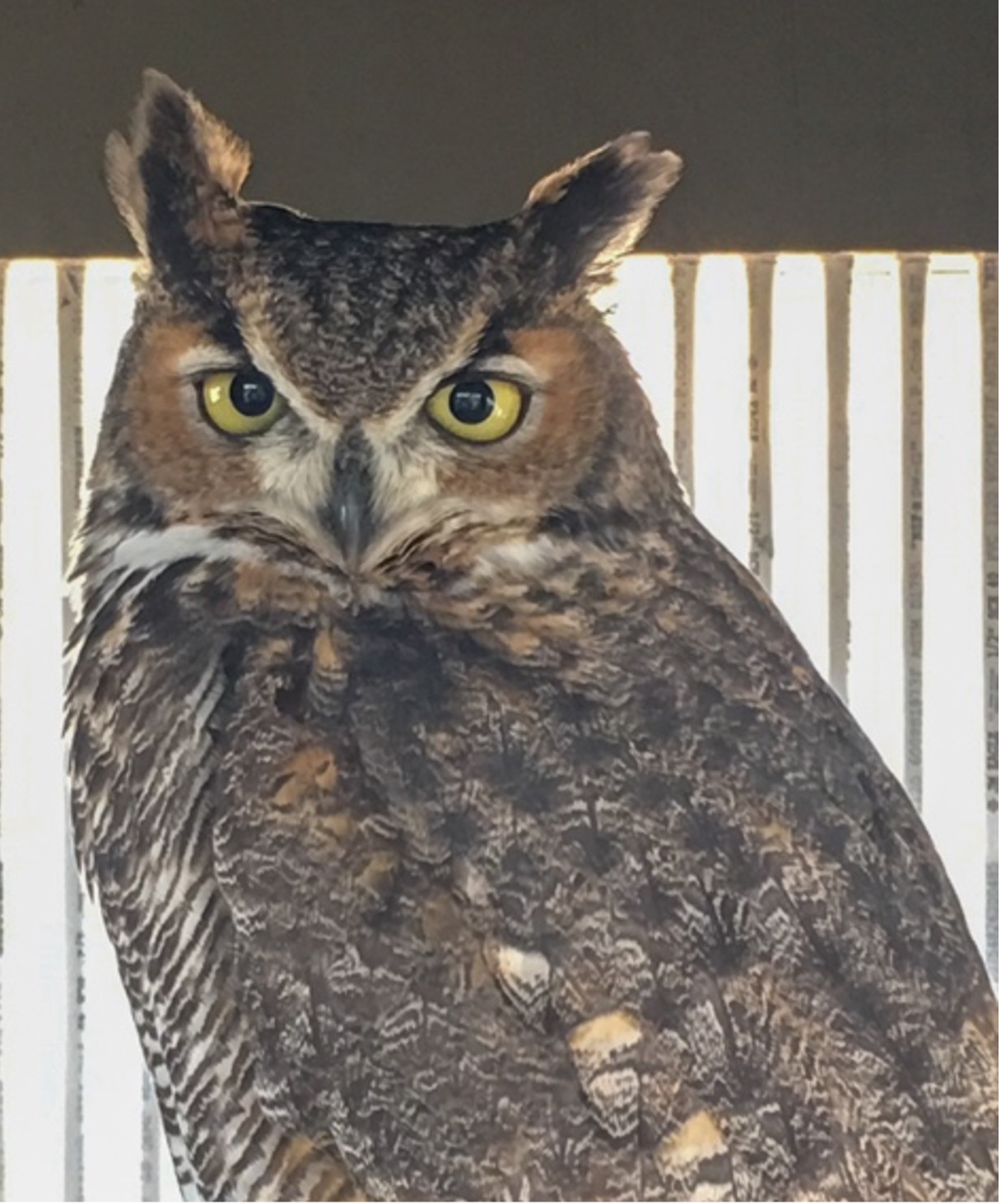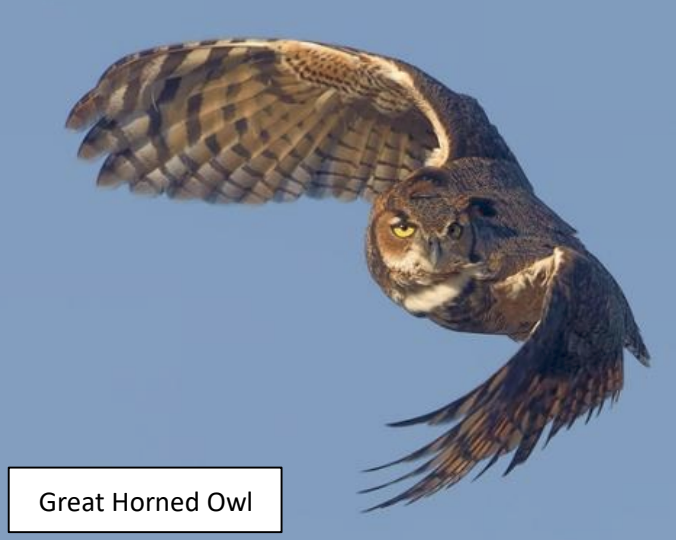

Great Horned Owl
Early naturalists' description as the "winged tiger" or "tiger of the air"), or the hoot owl. Its primary diet is rabbits and hares, rats and mice, and voles, although it freely hunts any animal it can overtake, including rodents and other small mammals.
This species' "horns" are tufts of feathers, called plumicorns. The purpose of plumicorns is not fully understood, but the hypothesis that they serve as a visual cue in territorial and interactions with other owls is generally accepted. Can live up to 29 years old.
Hunts mostly at night, sometimes at dusk. Watches from high perch, then swoops down to capture prey in its talons. Has extremely good hearing and good vision in low light conditions. In north in winter, may store uneaten prey, coming back later to thaw out frozen carcass by "incubating" it. Varied, mostly mammals and birds. Mammals make up majority of diet in most regions. Takes many rats, mice, and rabbits, also ground squirrels, opossums, skunks, many others. Eats some birds (especially in north), up to size of geese, ducks, hawks, and smaller owls. Also eats snakes, lizards, frogs, insects, scorpions, rarely fish.

Listen to a Great Horned Owl Hoot!
